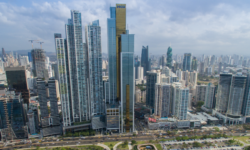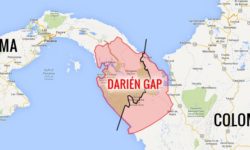The controversy generated this year by the Panama Papers may have left many Americans with a negative impression of Panama. The real story of fugitive capital is found not in Panama, but in Iceland, Russia, or any of dozens of other nations.
The Papers data covered four decades, and recent years already showed a dramatic decline in shadowy legal business as Panama strengthened its laws and regulations. Some foreign critics predicted there would be a run on Panama’s banks, as panicked ne’er-do-wells pulled their money, and bank liquidity took a dive. Nothing of the sort occurred. Bank liquidity actually improved slightly.
At the last moment, foreign critics lambasted the Panama Canal expansion, one of the largest and most complex infrastructure projects on the planet. The expanded Canal was launched successfully, adjustments were made in its opening days as the first ships arrived, and they are moving through the new locks, helping Panama reach its target of 6% growth in gross domestic product for 2016, a slow growth rate by Panamanian standards.
Most annoying, the worst criticisms came from advanced economies whose banking systems and critical infrastructure are in far worse shape than Panama’s and who have yet to address their own problems.
The real story of Panama in the 21st century is a story of a rapidly developing economy that has nothing to do with offshore anything. For more than a decade, Panama’s GDP has averaged annual growth nearing 8%, with a few double-digit years. Even at the depth of the financial crisis in 2009, it booked a respectable 4% GDP growth, while nearly everyone else in the hemisphere booked red ink.
Foreign direct investment last year rose 17% from the record set in 2014, which was more than 9% above the record set in 2013. In 2000, per-capita GDP was similar to that in neighboring Costa Rica and Colombia, though well behind the two big Latin American emerging markets, Brazil and Mexico. As of the end of 2015, Panama’s per-capita GDP was 24% higher than Mexico’s, 39% higher than Brazil’s, 41% higher than Costa Rica’s, and 57% higher than Colombia’s.
Additionally, the massive improvement in transportation, logistics, and communications infrastructure has made Panama a leader in Latin America in those sectors.
Panama’s economy is based on free enterprise. The government and the people of Panama have a commitment to free enterprise that is rare in Latin America. In the 2014 presidential elections, two candidates with a socialist perspective took part in the televised debates and ran campaigns, but barely collected 1% of the vote between them. Due to the emphasis on private enterprise, the government has the income to provide benefits to the poor that can exceed those of Latin American nations that claim to be socialist. You are not likely to meet a Panamanian who would prefer to live in Venezuela.






